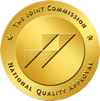In the depths of human behavior, addiction stands out as a particularly intricate and complex level. It combines a blend of psychological, social, and biological aspects. The good news is, as an addiction treatment center, when we work with people under our care, we uncover a narrative not just of struggle, but of the profound human capacity for support and change.
The difficulty comes when we understand that sometimes the people who want to help the most, are actually making matters worse.
Enabling addiction is when we unwittingly or inadvertently support someone’s addiction to drugs or alcohol. Maybe covering up for mistakes, financing the addiction, avoiding conversations, or simply not acknowledging the severity of the problem.
So, why do we enable addiction?
Understanding Enabling
At its heart, enabling is rooted in our instinct to alleviate pain or discomfort in those we care about. It’s the same instinct that prompts us to offer a hug to a grieving friend or make soup for a sick relative. But when it comes to addiction, this well-meaning impulse can inadvertently feed the very beast we’re trying to starve.
To understand enabling, we first need to grasp what addiction does to the brain. Imagine your brain has its own internal review system, where certain activities like eating or socializing get 5-star ratings because they release dopamine, the “feel-good” hormone. Drugs and alcohol can hijack this system, turning a leisurely activity into a must-have experience.
This hijacking leads to the brain prioritizing the substance over just about everything else.

Why do we enable addiction? The Social Aspect
When we ask, why do we enable addiction? We have to remember human beings are social creatures. Our actions are often influenced by the expectations and behaviors of those around us. In the context of addiction, social dynamics can play a pivotal role. Enabling can occur in social settings where substance use is normalized or even celebrated. It’s like being in a choir where everyone’s singing off-key but you’re convinced it’s harmony.
Families and friends, in their attempts to maintain peace or avoid confrontation, might ignore the problem, cover up negative incidents, or financially support the addicted individual, inadvertently constructing barriers to recovery rather than bridges.
The Stigma Factor
Our cultural attitudes towards addiction also add to this. Societal stigmas around addiction can lead to secrecy and denial, both in individuals struggling with addiction and their family and friends. This denial and stigma makes it challenging to address the problem head-on.
What Does Enabling Look Like?
Here are ten common ways people enable addiction.
- The Financial Cushion: It starts innocently enough – a few dollars here for lunch, a little there for rent. But soon, you find you’re funding not just the necessities but the addiction itself.
- The Cleanup: After a night of excess, you’re the one who calls in sick for them, makes the excuses for their behavior, or smooths things over with disappointed friends and family. You’re essentially the PR manager for their addiction, always ready with a spin.
- The Avoidance: Discussions about addiction? No thanks; too uncomfortable. … By not talking about the elephant in the room, you’re giving it free rein to dance on the coffee table.
- The Bailout: Whether it’s legal troubles, debt, or other crises, you’re always there to rescue them. Unfortunately, this often means they don’t face the music (or the consequences) themselves.
- The Denial: When friends or family express concern, you join in a chorus of, “It’s not that bad,” turning a blind eye to the severity of the situation.
- The Blame: You find reasons outside of their control for their addiction, blaming stress, work, relationships, or the alignment of the planets. By externalizing the cause, you inadvertently absolve them of responsibility.
- The Supply: Keeping alcohol or drugs within easy reach in the home, or even offering them during social occasions, is like keeping a lion as a house pet and wondering why the furniture keeps getting mauled.
- The Guilt Trip: If they try to address their addiction but slip up, they’re met with guilt and disappointment. This can discourage them from trying again, fearing failure and judgment more than the addiction itself.
- The Weak Ultimatum: You’ve set boundaries before, armed with ultimatums. But when they’re crossed, the consequences are as fleeting as a New Year’s resolution, teaching them that boundaries are merely suggestions.
- The Comfort Zone: In a strange twist, the addiction becomes a shared project, a familiar routine. By not pushing them (or yourself) out of this comfort zone, you both remain stuck in a predictable cycle.
From Enabling to Empowering
So, how do we move from enabling to empowering? It begins with education and awareness. Understanding the biological underpinnings of addiction can help us see it’s not simply a matter of willpower or moral failing. This can shift our approach from judgment to empathy and support.
Empowering someone struggling with addiction involves setting boundaries that encourage healthy behaviors without providing the means for the addiction to continue.
The Role of Professional Help
Professional help makes all the difference. Addiction treatment centers provide the tools and support necessary for people to navigate their way to sobriety.
Understanding and Support
Remember, enabling addiction doesn’t make you a bad person. It probably means you care quite a bit. However, it is a misguided expression of love and concern. Yet, with a solid understanding of the complexities of addiction and the roles we play in it, we can transform our approach from one of enabling to one of empowering.
If you are caught in the cycle of wanting to help a loved one overcome addiction, but feeling like your efforts might be part of the problem, give us a call. At EagleCrest Recovery, we understand the delicate balance between supporting and enabling.
Let’s navigate this journey together, making sure that every step taken is one towards healing and not inadvertently back into the cycle of addiction. Let’s start the conversation that leads to change.


